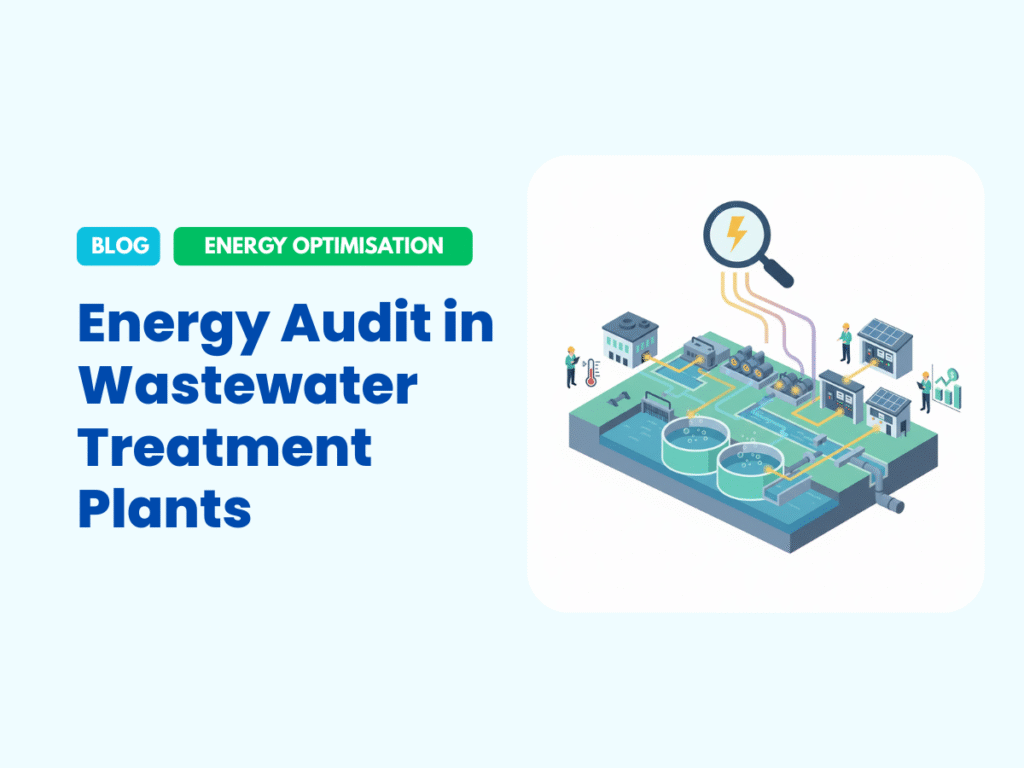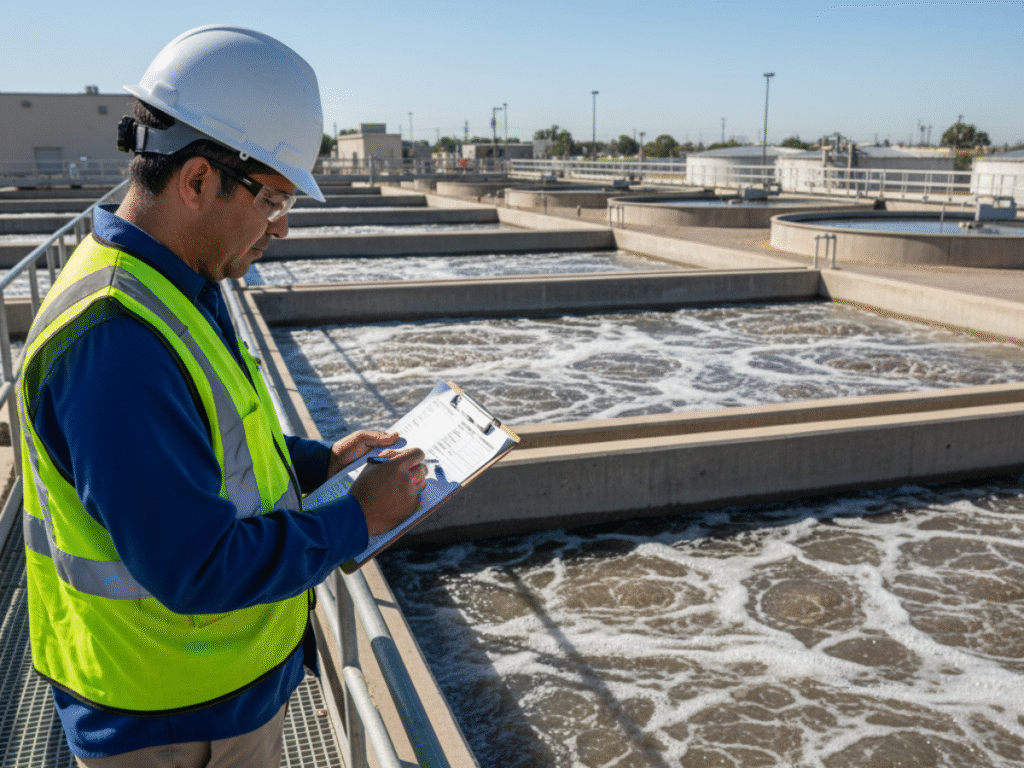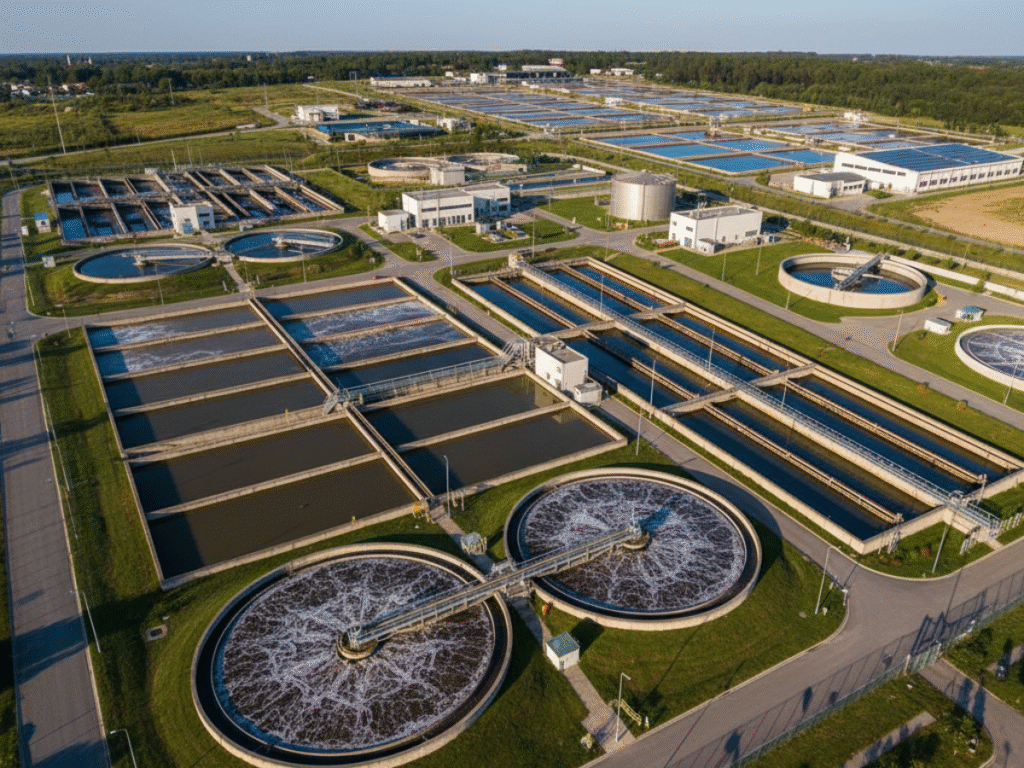Let’s walk through the systematic process of conducting an Energy Audit in WWTP. Each stage contributes to building a holistic understanding of energy performance and developing actionable insights.
Step 1: Define the Scope and Objectives
Before beginning the Energy Audit in WWTP, it’s essential to define the boundaries and goals. Decide whether the audit will cover the entire plant or focus on specific systems like aeration, pumping, or sludge handling.
Objectives might include reducing energy consumption by 15%, optimizing blower operations, or integrating renewable energy sources. A well-defined scope ensures that data collection and analysis remain focused and efficient.
Step 2: Collect Baseline Data
Data collection is the foundation of a successful Energy Audit in WWTP. This involves gathering:
Energy bills (electricity, gas, and diesel) for at least one year.
Plant flow and load data (influent and effluent characteristics).
Equipment specifications and operating schedules.
Maintenance logs and system control settings.
Using energy meters, data loggers, and SCADA systems, auditors can map the energy footprint across each unit process.
Step 3: Identify Major Energy Consumers
In most wastewater treatment plants, a few key processes account for the majority of energy use. Typically, they include:
- Aeration systems – up to 60% of total consumption.
- Pumping systems – around 15–25%.
- Sludge treatment and dewatering – about 10–20%.
Recognizing these high-demand systems helps auditors target where interventions can yield the highest impact.
For more information on optimizing these systems, check out Energy Optimization Tools for Wastewater Operations.
Step 4: Evaluate Process Efficiency
The next step in an Energy Audit in WWTP involves assessing how efficiently energy is being used within each unit process.
Key performance indicators (KPIs) such as specific energy consumption (kWh/m³) and oxygen transfer efficiency (OTE) help measure effectiveness. By comparing actual performance to design expectations or industry benchmarks, inefficiencies become clear.
Advanced monitoring technologies like variable frequency drives (VFDs), dissolved oxygen (DO) control systems, and smart sensors can significantly improve efficiency once problem areas are identified.
Step 5: Analyze Findings and Identify Opportunities
After gathering and evaluating data, auditors analyze it to identify specific opportunities for energy savings. Examples include:
- Upgrading blowers or aeration systems.
- Implementing VFDs on pumps and mixers.
- Optimizing sludge thickening and digestion processes.
- Recovering biogas for electricity or heat.
- Installing solar panels to supplement grid energy.
Each opportunity should be evaluated based on cost, payback period, and potential savings.
Refer to Wastewater Optimization for deeper insights on how technology can transform plant performance.
Step 6: Develop an Action Plan
The Energy Audit in WWTP culminates in the creation of a detailed action plan. This plan should prioritize opportunities based on feasibility, investment, and energy-saving potential.
A good action plan includes:
- A list of recommended measures.
- Estimated costs and payback periods.
- Implementation timeline.
- Expected outcomes in terms of kWh saved and emissions reduced.
By aligning the action plan with broader sustainability goals, WWTPs can ensure that energy optimization remains a continuous process.
Step 7: Implementation and Monitoring
Once recommendations are approved, the implementation phase begins. This step may involve equipment upgrades, control system integration, or process optimization.
However, an Energy Audit in WWTP doesn’t end with implementation — continuous monitoring is key. Using SCADA data, energy meters, and performance dashboards, plant operators can track improvements and make adjustments as needed.
Monitoring ensures that energy-saving measures deliver consistent long-term benefits.




